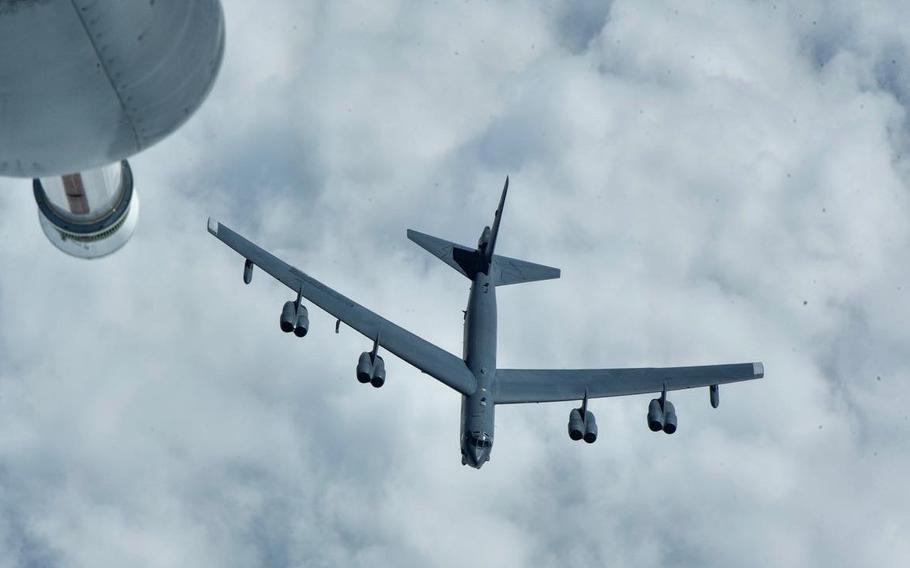
A B-52 Stratofortress from Barksdale Air Force Base, La., refuels in mid-air on Feb. 26, 2021. (Tiffany Emery/U.S. Air Force)
CAMP HUMPHREYS, South Korea — U.S. bombers and fighter jets drilled in the air with South Korea’s air force Tuesday, two days after North Korea fired its first ballistic missile in a month.
U.S. Air Force B-52 Stratofortress bombers and F-22 Raptors flew with South Korean F-35A Lightning IIs and F-15K Slam Eagles in and around the Korea Air Defense Identification Zone to improve “capabilities to respond to North Korea’s nuclear and missile threats,” according to a Ministry of National Defense news release Tuesday.
An Air Defense Identification Zone, or ADIZ, is airspace in which foreign aircraft are required to identify themselves in the interest of national security.
Air Force F-22s flew to Kunsan Air Base in South Korea from Kadena Air Base on Okinawa, Japan, for the drill, according to the Ministry of National Defense.
U.S. bombers have appeared in the Korean Peninsula as recently as Nov. 19, when B-1B Lancers drilled in the Korea ADIZ with F-16 Fighting Falcons and South Korean F-35As. The previous day, North Korea had fired an intercontinental ballistic missile that landed less than 150 miles from Japanese territory.
The Tuesday exercise comes after North Korea on Sunday fired two medium-range ballistic missiles toward the East Sea, or Sea of Japan. Those missiles, the first such launch since Nov. 18, were fired at a high angle and flew 310 miles before coming down in the sea, according to South Korea’s military.
North Korea has fired roughly 70 missiles in 34 rounds of testing so far this year, a record.
The drills are another example of the U.S. and South Korean “combined defense posture” against North Korea by using their “strategic assets,” according to the ministry on Tuesday.
Defense Minister Lee Jong-sup in a news conference with Defense Secretary Lloyd Austin at the Pentagon last month said the two pledged to respond to North Korea’s provocations using “U.S. strategic assets to the level equivalent to [the] constant deployment through increasing the frequency and intensity.”